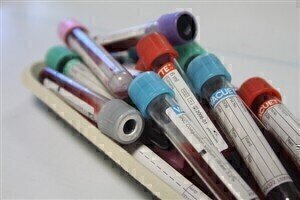Microscopy & Microtechniques
System helps to Characterise Exosomes for use in delivering Therapeutic Moieties to Specific Tissues In Vivo
Aug 10 2012
NanoSight reports on the work of Dr Seow Yiqi at the Science and Engineering Institutes, Singapore, where they apply Nanoparticle Tracking Analysis (NTA) to characterise exosomes for use in delivering therapeutic moieties to specific tissues in vivo.
Dr Seow Yiqi is working to use exosomes (nanoparticles secreted by cells of ~100nm in size) to deliver therapeutic moieties to specific tissues in vivo. This is work that follows on from his DPhil studies at the University of Oxford in Professor Matthew Wood's group. Describing his work, he said "I used targeted exosomes loaded with siRNA to effect knockdown in the brain after intravenous injection of these exosomes. The development of 'self' delivery vehicles, such as patient-derived exosomes, may be a good first step towards gene/drug therapy that requires repeated delivery over a period of years or decades. Towards this aim, using the NanoSight system has proved to be invaluable in providing size and concentration measurement for each exosome purification. This data allows me to check the quality and purity of the preparation as well as to look at the physical effects of my surface modifications and loading protocols on the physical characteristics of exosomes."
Other than NTA, he had used dynamic light scattering (DLS) for bulk measurement, and transmission electron microscopy using negative staining with phosphotungstanic acid for sizing. DLS was useful if the purification was pure and the sample being measured was relatively homogenous, but more often than not, the population purified tended to be polydisperse with nanoparticles of varying sizes in the same preparation. That biased the DLS measurements and it was difficult to get reproducible results with the system. In contrast, the TEM was accurate and precise, but the preparation was arduous and time-consuming and the results are a very small representation of the bulk, so it was not useful in working out concentration or size distribution. Concluding, he said, "Using Nanoparticle Tracking Analysis overcame these issues perfectly for my work. Measurements were rapid and by counting particle by particle, the true polydisperse nature of the samples was reported."
Digital Edition
Lab Asia 31.2 April 2024
April 2024
In This Edition Chromatography Articles - Approaches to troubleshooting an SPE method for the analysis of oligonucleotides (pt i) - High-precision liquid flow processes demand full fluidic c...
View all digital editions
Events
May 21 2024 Lagos, Nigeria
May 22 2024 Basel, Switzerland
Scientific Laboratory Show & Conference 2024
May 22 2024 Nottingham, UK
May 23 2024 Beijing, China
May 28 2024 Tel Aviv, Israel









.jpg)








